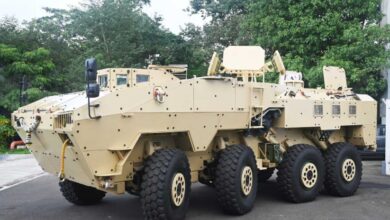Senate Defense Act Draft: Fostering Deeper American-Indian Cooperation And Partnership

- The first is "eligibility for funding to start or help with cooperative research, development, testing, or evaluation projects" with the DOD in AI
- And finally, it tells DOD to look into "whether companies from India are eligible to bid on contracts for the maintenance, repair, or overhaul" of DOD equipment outside the US.
As part of the National Defense Authorization Act (NDAA), which sets the US defense budget and priorities, the Senate Armed Services Committee (SASC) has asked the Pentagon to make sure that India is “appropriately considered for security cooperation benefits,” since it is a major defense partner.
In particular, the draft NDAA asks the US defense secretary to expand cooperation with India in areas like artificial intelligence (AI), undersea domain awareness, air combat and support, munitions, and mobility. It gives a list of areas, such as counter-terror operations, maritime and border security operations, and military intelligence operations, where the Pentagon should think about making a deal with India to build capacity.
It asks the Pentagon to find out if Indian companies are eligible to bid on contracts for “maintenance, repair, and overhaul” (MRO) of Department of Defense (DOD) equipment outside the US. This is a big step that, if taken, will open doors for India’s growing number of private defense companies.
Even though the Senate Armed Services Committee passed this version of the NDAA, it is not yet the final form. The House of Representatives is in the process of finalizing its own version of the NDAA. Eventually, the two versions, passed by the Senate and the House, will be resolved in conference before the text is finalized.
The build-up
But the Senate’s version is thought to have the support of the top political leaders in that body. It is based on information from the Department of Defense and is the result of a lot of communication between the US Congress and India in the past few months.
This year, the Senate majority leader, Chuck Schumer, led the most powerful congressional group ever to India. There, he met with Prime Minister Narendra Modi and talked about how important the relationship with India is in the competition with China. The head of the SASC, Jack Reed, was part of the group.
During his state visit to Washington, DC, last month, Modi spoke to a joint meeting of the Senate and the House. When he talked about stronger defense ties between India and the US, he got a standing ovation and applause. During a meeting with the leaders of Congress in the Capitol, he met Schumer. He also talked to Schumer at the state dinner given by President Joe Biden, where the Senate majority leader was seated at the head table with the President and the Prime Minister.
A defense industrial cooperation road map is a key part of the initiative on critical and emerging technologies (ICET), which the two countries have also announced and made work. During defence secretary Lloyd Austin’s visit to New Delhi in June, this road map was finalized. During Modi’s visit, in a rare move, the White House sped up the acceptance of the co-production of GE’s F414 jet engines in India with a tech transfer that had never happened before.
The NDAA text
In the NDAA draft, the defense secretary is asked to work with the secretary of state and the heads of other important agencies to look into four ways to make sure India gets the most out of being a major defense partner.
The first is “eligibility for funding to start or help with cooperative research, development, testing, or evaluation projects” with the DOD in AI, undersea domain awareness, air combat and support, munitions, and mobility.
The second is “eligibility to enter into reciprocal agreements with the Department of Defence for the cooperative provision of training on a bilateral or multilateral basis in support of programs to build capacity.” It lists eight areas of cooperation in this area, including counterterrorism, counterweapons of mass destruction, counterdrug trafficking, countertransnational organized crime, maritime and border security, military intelligence, air domain awareness, and cyberspace security and defensive cyberspace operations.
India’s “eligibility to enter into a memorandum of understanding or other formal agreement with the Department of Defense for the purpose of conducting cooperative research and development projects on defense equipment and munitions” is the third thing the Senate wants the Pentagon to do for India.
And finally, it tells DOD to look into “whether companies from India are eligible to bid on contracts for the maintenance, repair, or overhaul” of DOD equipment outside the US.
The NDAA draft also tells the defense secretary to give a briefing to the Senate and House committees on the status of “security cooperation activities with India” in the above-mentioned areas by March 1, 2024.







Facebook Comments